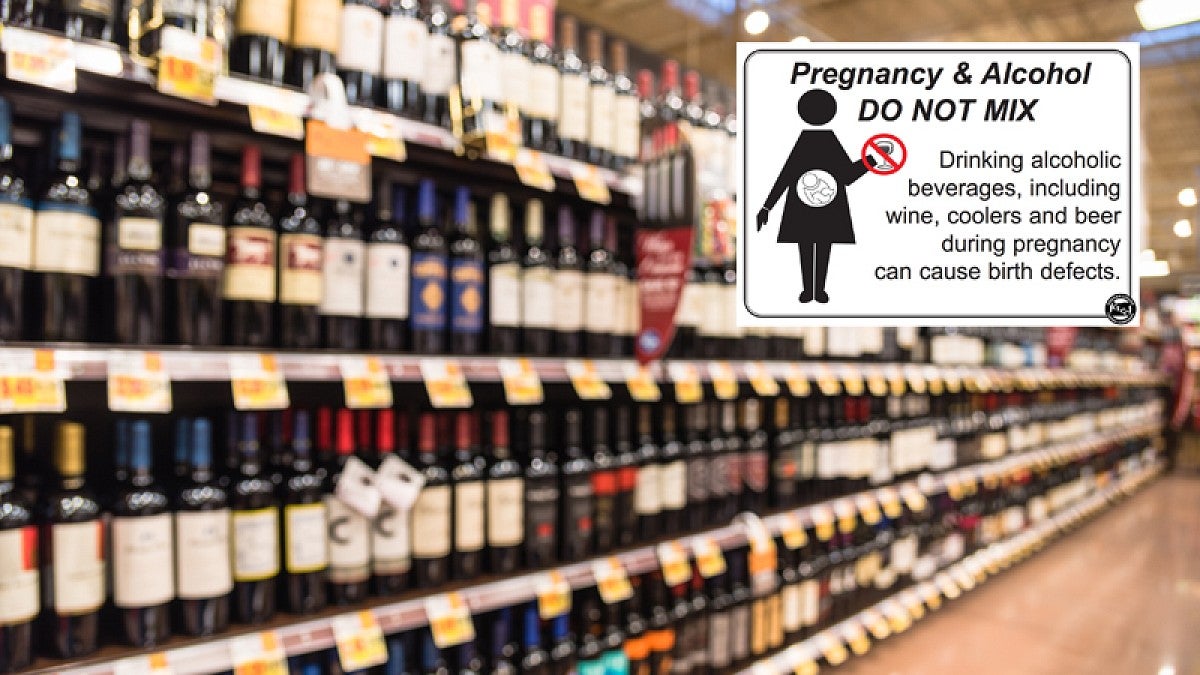A random encounter with a warning sign at a north Eugene grocery store put Gulcan Cil on the trail of research toward her UO doctoral degree and, now, a newly published paper.
The paper, published in the Journal of Health Economics, took a deep dive into extensive federal data to probe behavioral changes that likely resulted from point-of-sale warning signs urging women who are pregnant to avoid alcohol.
In states requiring the signage, drinking by pregnant women is down 11 percent, Cil found. She also found evidence of fewer premature births coming with less than 32 weeks gestation and fewer births of babies weighing less than 3.5 pounds. The biggest effects were among women 30 and older.
Cil, now a visiting instructor in the UO Department of Economics and postdoctoral fellow in the Mikesell Environmental and Resource Economics Research Lab, recalled how her research began.
New to Eugene in 2010, she said, she wasn’t pregnant, had no plans to be and didn’t have any friends who were. But that grocery store sign that depicted a woman with a baby inside and holding a cocktail glass and topped with the words “Pregnancy & Alcohol DO NOT MIX” captivated her.
“Every time I walked in the store I saw the sign at the front door and again at the register, and I was like: What is this? I saw it enough times, I guess, that I kind of knew that you’re not supposed to drink alcohol while pregnant, but that was like a confirmation to me,” she said. “I found it very educational, and I was interested in policy behind it.”
Cil was born and raised in Turkey, where such warnings are not used because, she said, drinking by pregnant women is not considered a public health concern.
With a background in environmental economics, Cil had chosen to pursue health economics as a doctoral student. She soon learned that 23 U.S. states and Washington, D.C., required such signs at all retail stores that sell alcohol.
“So I looked in the literature to see if they actually worked,” she said. “I found that the issue had never been studied and evaluated as a public education program or public awareness program.”
Cil mined two national databases — the National Vital Statistics Natality Detail Files and the Behavioral Risk Factor Surveillance System — for clues. Her focus was on information gathered between 1985 and 2010.
Using complex analytic techniques on data related to drinking by women, she compared signage-adopting states with a group of nonadopting states. Her control group included women who had lived in nonadopting states and women who lived in adopting states before signage requirements began.
Her approach allowed her to identify the direct relationship between drinking while pregnant and birth outcomes, while also reducing the likelihood that other factors such as cigarette smoking, drug abuse, nutritional deficiencies and other risky life choices were at play in any behavioral changes.
The study, she said, suggests a likely causal relationship, which had not previously been documented in relation to signage policies, between drinking while pregnant and birth outcomes.
Cil was not able to sufficiently probe effects related to heavy drinking, which is associated with fetal alcohol spectrum disorders. The lack of statistical significance for behavioral change related to these disorders may reflect the fact that they are rarely diagnosed at birth and reported on birth certificates, she said.
Point-of-sale warning signs, she said, are an effective, low-cost approach to protecting the health of pregnant women and the babies they carry.
The signs used by states that require warnings all contain similar language. A future study, Cil said, might explore whether variations in signage — the graphics, fonts, colors and language used — may best be effective.
—By Jim Barlow, University Communications


